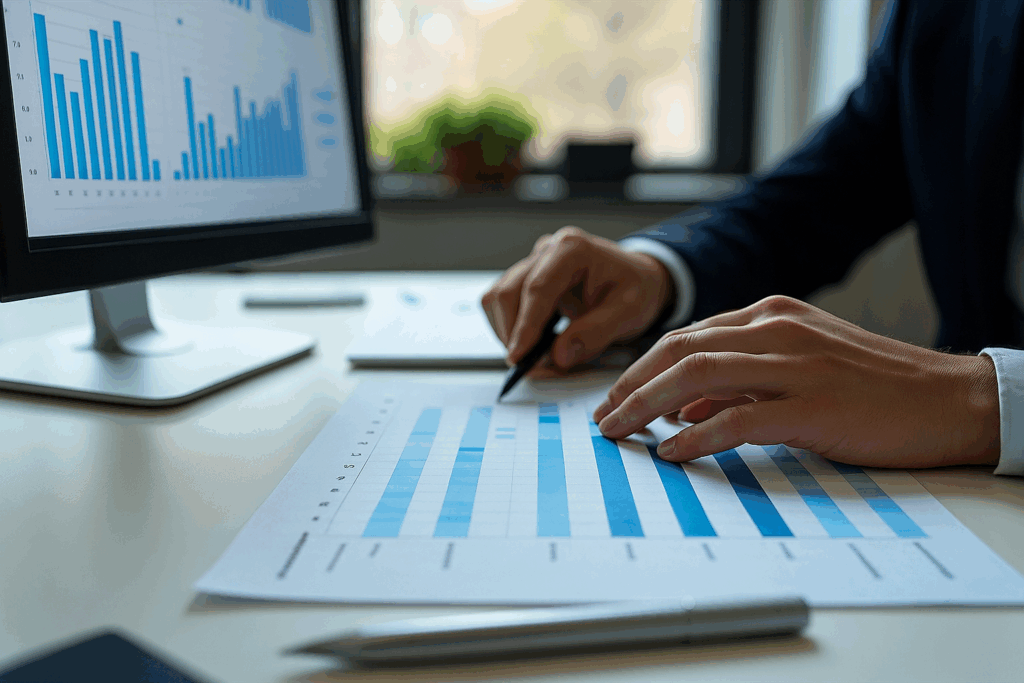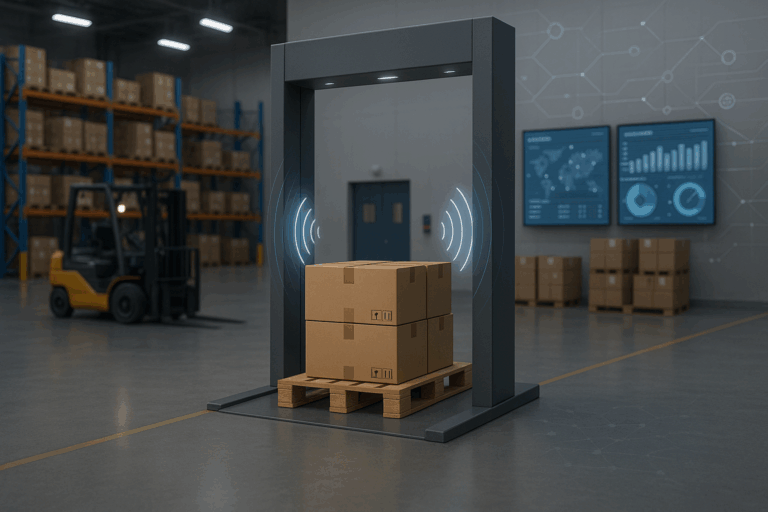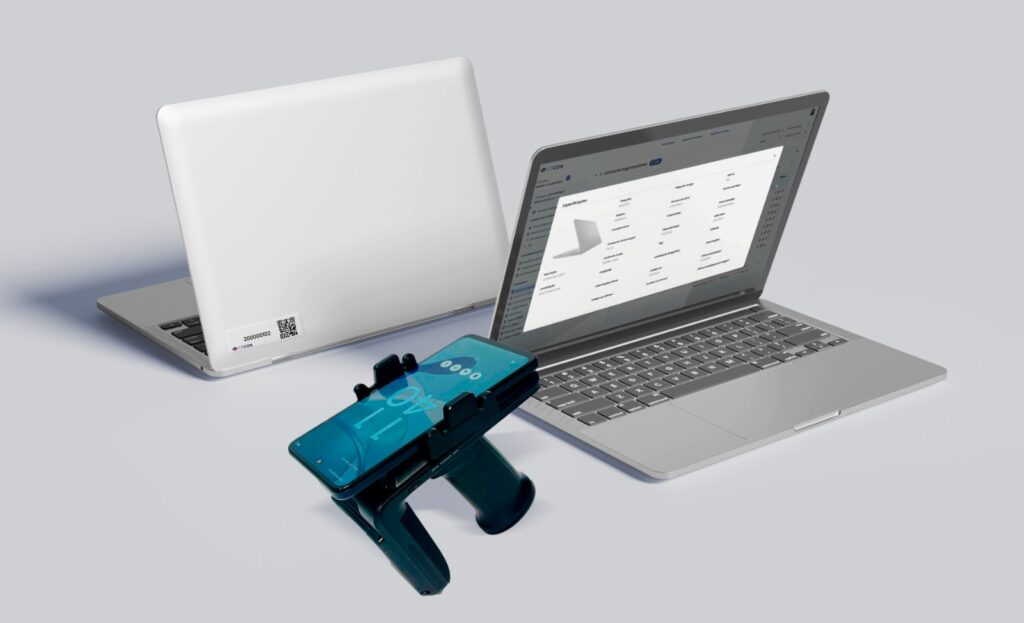MRO inventory is the first foundation that ensures turbines, substations, offshore platforms, and critical energy systems operate with maximum safety and efficiency. MRO — Maintenance, Repair, and Operations — includes all the supplies, spare parts, and equipment essential for the continuous operation of these infrastructures.
In the energy sector, a single failure in MRO inventory management can lead to millions in financial losses, safety risks, and service disruptions. It involves tracking enormous volumes of items with extreme precision: valves, sensors, filters, pumps, cables, transformers, motors, and tens of thousands of replacement parts.
This logistical complexity, combined with strict regulatory pressure and the constant demand for nearly uninterrupted availability, makes MRO inventory management a strategic priority. Far beyond operational support, MRO inventory management balances asset integrity, financial cost, and scalable, secure growth capacity.
This is precisely where specialized asset control and physical inventory solutions, like those offered by CPCON, become a true competitive advantage — not only to reduce risks but to transform data into operational intelligence.
Table of Contents
ToggleWhat Is MRO and Why Is It the Starting Point for Management in the Energy Sector
MRO stands for Maintenance, Repair, and Operations. It covers all items required to keep productive assets functioning continuously, ranging from high-value spare parts to daily consumables.
In the energy sector, MRO sustains the daily routines of power plants, refineries, offshore platforms, and wind farms, where unexpected failures can compromise both production and safety.
Contrary to common perception, MRO inventory is not just about storage. It is a living system that ensures immediate availability of the right items, in the right quantities, at the right time.
Pressure valves, temperature sensors, electric cables, hydraulic systems, transformers, connections, lubricants, specialized tools — all must be readily available to allow maintenance without delays or improvisation.
In energy operations, any failure to control these items can stop a wind turbine at peak production, compromise offshore platform safety, or disrupt energy supply to thousands of consumers.
Therefore, MRO inventory is not a secondary support process: it is the first pillar of accurate management.
Without reliable data on inventory levels, locations, and item criticality, an organization’s entire operational and financial planning becomes vulnerable.
A well-structured MRO inventory enables:
- Continuous availability of critical spare parts.
- Avoidance of costly emergency purchases.
- Reduction of unnecessary tied-up capital.
- Supplier contract optimization based on actual consumption data.
- Full traceability for audit preparation.
For these reasons, MRO inventory is the essential first step for any scalable management strategy in the energy sector. It ensures the operational stability needed for companies to grow safely while maintaining control over their assets.

The Three MRO Categories Applied to the Energy Sector
In the energy sector, MRO management can be organized into three main categories. Each plays a strategic role in ensuring safe and efficient operational continuity.
1. Maintenance: Keeping the Operational Environment Ready
This category includes materials used to ensure facilities remain organized and continuously operational. Examples include:
- Technical cleaning supplies for controlled areas.
- Auxiliary electrical materials (lamps, auxiliary cables, low-voltage breakers).
- Hand tools, inspection devices, and measurement instruments.
These items ensure that the physical environment remains suitable to support critical operations, even if they are not directly applied to productive equipment.
2. Repair: Minimizing Downtime of Critical Assets
This category involves components directly used in corrective and preventive maintenance of equipment. It includes:
- Bearings for turbines, pumps, and compressors.
- Safety valves, sensors, and process transmitters.
- Specialized bolts, joints, and fastening elements.
In energy operations, having these items readily available drastically reduces downtime of strategic equipment, avoiding production losses and safety risks.
3. Operations: Protecting People and Ensuring Process Continuity
This category includes materials essential for safe and efficient daily operations. Examples include:
- Personal protective equipment (PPE) designed for high-voltage areas, explosive environments, or offshore operations.
- Flame-retardant and anti-static uniforms.
- Testing instruments and specialized cutting tools.
In the energy sector, strict management of these items not only protects employees but ensures regulatory compliance and operational quality.
What Are MRO Materials in Practice?
Although they are not part of the final product, MRO materials support the entire operational infrastructure. Small missing items or poor management can cause delays, unplanned shutdowns, and increased costs.
A large portion of MRO inventory’s financial value is concentrated in items with irregular consumption, high unit cost, and long lead times. These parts may remain in storage for extended periods but become critical when urgently needed.
In the energy sector, this reality demands extremely rigorous and integrated control since operational safety and production availability are directly tied to inventory reliability.

How MRO Inventory Relates to the Energy Sector
In energy operations, MRO inventory is not just a logistical support function — it is central to operational continuity. Every turbine, substation, or offshore platform depends on specific replacement parts being available precisely when needed.
Without a reliable MRO inventory:
- Maintenance teams face prolonged downtime.
- Procurement teams are forced into costly emergency purchases.
- Operational predictability and financial efficiency are lost.
MRO inventory is thus a decisive factor for safety, availability, and financial governance in the energy sector. Integrated MRO management transforms operational risk into control and unpredictability into stability.
The Risks of Operating Without a Structured MRO Inventory
When MRO inventory is not treated as a strategic asset, consequences can escalate rapidly — especially in the energy sector, where operational margins for error are minimal.
Unavailability of Critical Parts at Critical Moments
Even a short delay in replacing a component can force unplanned turbine shutdowns, failures in substations, leaks in offshore platforms, or emergency transmission shutdowns. These interruptions not only disrupt operations but translate directly into millions in financial losses.
Excess Immobilized Stock and Capital Waste
Without accurate data, companies maintain large volumes of idle or obsolete parts, consuming capital that could be invested in expansion, innovation, or preventive maintenance. Additionally, the technical obsolescence of certain components worsens waste and complicates financial audits.
Accounting Errors and Regulatory Audit Risks
Discrepancies between physical inventory and financial records are highly sensitive in audits. In the highly regulated energy sector, such failures can lead to fines, unexpected financial adjustments, and loss of credibility with regulators and investors.
Operational Inefficiency and Strategic Blind Spots
Lack of integrated inventory visibility prevents intelligent maintenance planning, complicates supplier negotiations, and overloads teams with manual corrections, emergency adjustments, and constant rework.
In summary: a poorly structured MRO inventory creates an environment of ongoing uncertainty. Without reliable data, the company operates blindly — exposed to technical, financial, and legal risks. The opposite of precise, scalable management.
How to Build an Accurate and Scalable MRO Inventory: The Essential Steps
Building a solid MRO inventory is far more than counting items. It requires methodical discipline, technical rigor, and integration across operational, financial, and maintenance areas.
In the energy sector — where material volumes are high and operational criticality is extreme — the path to a precise and scalable inventory includes seven essential steps:
1. Comprehensive Technical Diagnosis
The first step is to map the entire warehouse, storage, and maintenance infrastructure. It is crucial not only to quantify items but to understand how each material is classified, stored, recorded, and consumed across operational processes.
2. Data Cleansing and Standardization
Most energy companies’ ERP and CMMS systems contain duplicate records, inconsistent descriptions, and multiple codes for the same item. Before any physical count, these databases must be cleaned and standardized, creating unified technical descriptions, unique codes, and consistent material family classifications.
3. Complete and Auditable Physical Inventory
Once the data is cleansed, a field inventory is conducted. The count must be performed by trained teams, with cross-checking, correct units of measurement, and identification of non-conforming items. This step aligns physical stock with system records with rigor.
4. Operational Criticality Analysis
Not all MRO items have the same operational impact. Each part must be classified by its importance for operational continuity, safety, and regulatory compliance. This analysis informs minimum stock policies, safety stock levels, and replenishment priorities.
5. Integration with Corporate Systems
The updated inventory data must be integrated into ERP and CMMS systems, ensuring that procurement, maintenance, and financial processes operate on the same reliable data set. This integration prevents future deviations and enables real-time monitoring.
6. Review of Inventory Policies
With reliable data, companies can redefine inventory policies based on historical consumption, supplier lead times, equipment criticality, and storage costs. This enables capital reduction without compromising availability.
7. Continuous Monitoring and Ongoing Improvement
MRO inventory management is not a one-time project. Maintaining accuracy requires periodic reviews, internal audits, and technologies that facilitate ongoing control, such as RFID, IoT sensors, and intelligent dashboards.
With this structure, MRO inventory becomes a strategic asset that generates operational predictability, financial security, and a solid foundation for scalable energy operations.
Discuss how CPCON Group can turn your MRO inventory into a strategic lever for operational excellence.
Schedule a private consultation with our technical specialists.

Key Challenges Faced by Energy Companies in MRO Inventory Management
Even while recognizing the strategic importance of MRO inventory, many energy companies face practical obstacles that hinder building efficient and scalable control. These challenges stem from both operational complexity and fragmented information systems.
High Volume and Diversity of Items
Energy operations handle thousands of MRO items, from highly specific spare parts to daily consumables. Every turbine, substation, or offshore platform operates with a unique combination of equipment, requiring a highly diversified and constantly updated inventory.
Lack of Standardization in Databases
Many organizations maintain historical records with incomplete data, duplicate codes, conflicting descriptions, and inconsistent nomenclature. Without a standardized database, even the most advanced ERP system will produce conflicting and unreliable information.
Disconnected Management Systems
ERP (Enterprise Resource Planning), CMMS (Maintenance Management System), and procurement systems often operate independently, with limited or nonexistent integrations. This prevents integrated inventory visibility and hinders intelligent preventive maintenance and replenishment planning.
Decentralized Management and Multiple Warehouses
Companies operating across multiple geographically dispersed facilities face the additional challenge of maintaining data consistency across different units. Frequently, local warehouses adopt independent control policies, complicating corporate consolidation of inventory data.
Lack of Continuous Review and Update Processes
Even companies that conduct extensive physical inventory projects eventually lose accuracy if they fail to establish ongoing review cycles, internal audits, and data updates. Without continuous maintenance, control erodes again.
Overcoming these challenges requires more than just technology — it demands structured methodology, operational discipline, and strategic vision. This is the turning point that separates reactive companies from those operating with sustainable operational intelligence.
How RFID Technology and System Integration Transform MRO Management
Technology has evolved from being a support tool to becoming a core element in building accurate, auditable, and scalable MRO inventories — especially in the energy sector, where material volumes and operational criticality demand absolute control.
RFID: Automated Reading and Real-Time Tracking
Radio Frequency Identification (RFID) technology allows thousands of items to be identified, located, and counted automatically, without manual reading. In warehouses at plants, refineries, or offshore platforms, RFID eliminates human errors, accelerates inventory counts, and provides instant traceability.
By tagging critical components with RFID, companies achieve:
- Immediate visibility of each item’s storage location.
- Automatic alerts on movement, consumption, and replenishment.
- Simplified cycle counts, even in restricted or hazardous environments.
- Significant reduction in time and costs for verification routines.

Full Integration Between ERP, CMMS, and Field Operations
When RFID-controlled physical inventory is integrated into ERP and CMMS platforms, companies operate on a single, reliable data source. Purchase orders, maintenance requests, and consumption projections reflect actual inventory levels, allowing:
- Preventive maintenance planning based on real part availability.
- Elimination of last-minute emergency purchases.
- Financial records aligned with verified physical inventory.
- Drastically reduced discrepancies between departments.
Intelligent Dashboards and Predictive Analytics
With fully integrated data, companies gain access to advanced dashboards that enable:
- Real-time monitoring of inventory turnover.
- Early detection of idle or at-risk obsolete materials.
- Accurate demand forecasting based on historical consumption and maintenance cycles.
- Full traceability for audit readiness.
In an energy sector that grows increasingly complex each year, adopting RFID and full system integration not only improves efficiency but creates an environment of total control, operational intelligence, and real scalability.
How CPCON Turns MRO Inventory into a Strategic Advantage
In the energy sector — where every maintenance decision carries significant operational, financial, and regulatory risks — building an accurate MRO inventory requires more than technology. CPCON positions itself as a true strategic partner, combining expertise, field execution, and advanced control systems.
In-Depth Field Technical Diagnosis
CPCON starts with a comprehensive technical assessment of all plants, warehouses, and MRO processes. This broad analysis allows quick identification of inconsistencies, hidden risks, and operational improvement opportunities.
Specialized Teams for Full Physical Inventory
Physical inventory execution is carried out by highly trained teams using proprietary methodology, ensuring:
- Accurate counts even in complex and critical environments.
- Verification of units, packaging, and material conditions.
- Identification of obsolete, expired, or inactive items.
High-Level Data Cleansing and Standardization
Following physical verification, CPCON rebuilds the database by:
- Eliminating duplicates and inconsistencies.
- Creating standardized technical descriptions and unified coding structures.
- Classifying items by family, criticality, and operational cycles.
Secure Integration with ERP, CMMS, and Financial Systems
With the cleansed database, CPCON integrates data into corporate systems, ensuring permanent consistency between physical stock and system records, reducing operational and financial errors.
Deployment of RFID and Digital Control Solutions
The project evolves to a new level of control by implementing technologies such as RFID, automatic readers, IoT sensors, and intelligent dashboards that allow:
- Real-time continuous monitoring.
- Permanent reduction of manual errors.
- Data-driven decision-making based on accurate, updated information.
Full Audit Readiness and Regulatory Compliance
The entire process led by CPCON is designed to provide full traceability and audit security, meeting the strict accounting, tax, and regulatory standards of the energy sector.
The final result is not simply an adjusted inventory, but a robust operational control foundation ready to support the company’s safe and scalable growth.
Explore more insights to strengthen your asset management strategy:
- Mastering Fixed Asset Depreciation for Financial Accuracy
- Fixed Asset Audit: Checklist with 5 Practical Steps to Prepare Yourself
- Inventory Management: The Hidden Cost of the 6.5% Inventory Gap
Transforming MRO Inventory Is Securing the Future of Energy Operations
In the energy sector, there is no room for uncertainty. Each operational failure can generate financial losses, regulatory penalties, and safety risks. MRO inventory provides the predictability and control that energy companies need to operate efficiently.
A well-structured MRO inventory is not just about organizing stock. It enables safer audits, smarter supplier negotiations, well-planned preventive maintenance, and — above all — protects the company from unplanned downtime and financial waste.
Companies that transform MRO management into a strategic asset build a solid foundation to grow with control, safety, and scalability. And that journey starts with reliable data.
CPCON delivers exactly this foundation: technical rigor, proven methodology, applied technology, and comprehensive support to turn MRO inventory into a real competitive advantage.
Ready to turn your MRO inventory into a strategic pillar for efficiency and growth?
Contact CPCON and take full control of your assets.
FAQ
What does MRO mean in the energy sector?
MRO stands for Maintenance, Repair, and Operations. It includes all supplies, parts, and materials used to maintain and continuously operate critical assets such as turbines, offshore platforms, substations, and transmission lines.
Why is MRO inventory the first step toward accurate management?
Without reliable MRO inventory data, companies cannot properly plan preventive maintenance, optimize procurement, ensure audit compliance, or reduce operational risks. It sustains the entire strategy for efficiency and growth.
What are the main risks of poorly managed MRO inventory?
Unplanned shutdowns, expensive emergency purchases, excessive obsolete stock, accounting discrepancies in audits, regulatory fines, and financial losses due to unexpected failures.
How does RFID technology improve MRO inventory control?
RFID allows automatic identification and tracking of each item in stock, eliminating manual errors, speeding up inventory counts, and providing real-time visibility of materials.
Can companies with multiple plants integrate MRO inventory management?
Yes. With standardized databases, integrated systems, and continuous review processes, even decentralized operations can maintain a fully integrated and reliable MRO inventory.
Does MRO inventory improve audit readiness?
Absolutely. A structured MRO inventory delivers complete traceability, minimizes physical-to-financial discrepancies, and provides confidence during regulatory audits.
How does CPCON support MRO inventory management?
CPCON leads the entire process: technical diagnosis, full physical inventory, advanced data cleansing, system integration, RFID deployment, and full audit preparation — ensuring total security and compliance.























